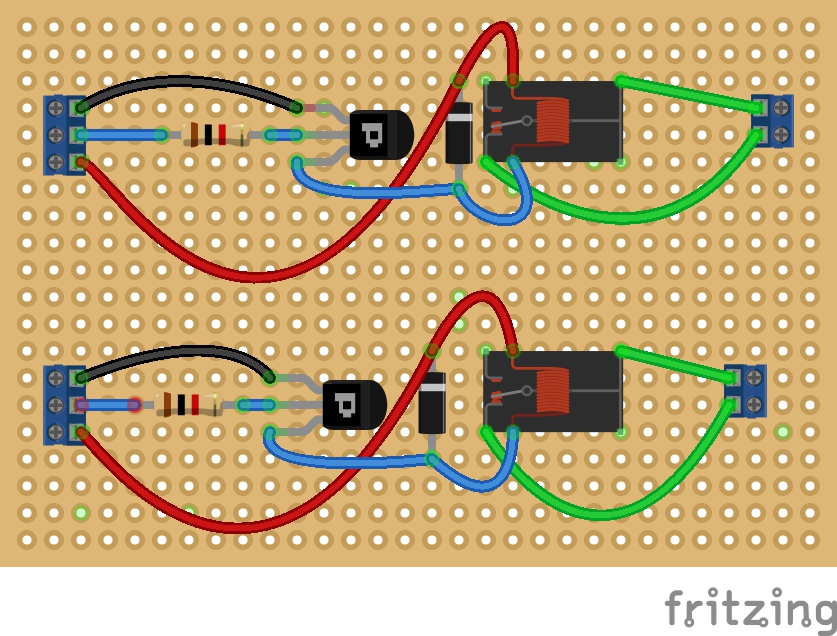Dual Relay Circuit to Control Mains Electric Circuit Diagram After a very long period I am posting this query to you. My request to you is that How I can incorporate a single transistor and photo diode in this circuit so that I can operate as a remote relay circuit. Your explanation on "How to design a relay energizing Circuit" is an eye opener to me. Thanks for your posting. Please reply to to the

Electrochemical relays are used in general electrical and electronic control or switching circuits. The design and type of relay switching circuit is quite huge. A relay is said to switch one or more poles just like a simple switch circuit. Each pole of relay has contacts that can be thrown in three different ways:

#13: Basic Relay Control Circuit on a Breadboard Circuit Diagram
The Basics of Control Relays Perhaps the most confusing aspect of relay control circuits for students to grasp is the meaning of normal as it applies to the status of relay contacts. As discussed previously, the word "normal" in this context - whether it be the status of hand switches, process switches, or the switch contacts inside

Build a basic relay driver circuit. Single stage low side relay circuit uses one BJT NPN transistor. How to calculate component values. For more information For example, a relay may be controlled by a low-voltage, low-current signal that passes through a delicate switch of some sort (e.g. limit switch, proximity switch, optical sensor), and then the switching contacts of that relay may be used to control a much higher-voltage, higher-current circuit, and even multiple circuits given multiple sets

Creating a Relay Switch Circuit: Diagram and Schematic Circuit Diagram
Relay logic basically consists of relays wired up in a particular fashion to perform the desired switching operations. The circuit incorporates relays along with other components such as switches, motors, timers, actuators, contactors etc. The relay logic control works efficiently to perform basic ON/OFF operations by opening or closing the relay contacts but it involves a humongous wiring. A very common form of schematic diagram showing the interconnection of relays to perform these functions is called a ladder diagram. In a "ladder" diagram, the two poles of the power source are drawn as vertical rails of a ladder, with horizontal "rungs" showing the switch contacts, relay contacts, relay coils, and final control elements (lamps, solenoid coils, motors) drawn in between Knowing how relays work, you can create a circuit capable of controlling these types of lights using just a photoresistor, two NPN transistors, and a relay: The circuit uses an LDR (Light Dependent Resistor) as a light sensor, which, in simple terms, is a resistor whose value increases in darkness and decreases in the presence of light.
